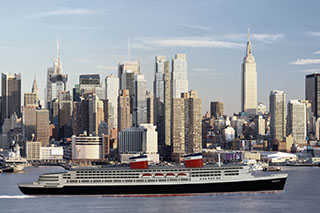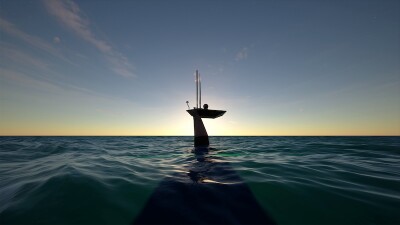High-end luxury cruise company Crystal Cruises, based in Century City, Calif., has signed a nine-month option to potentially refurbish and re-power the SS United States, and take the nearly 65-year-old liner – once the pride of American maritime power – back to sea.
“We knew the ship’s future depended on activating her commercial potential,” said Susan Gibbs, executive director of the SS United States Conservancy, at a Feb. 4 New York City press conference announcing the deal. The agreement with Crystal Cruises – which will pick up the conservancy’s monthly $60,000 bill to maintain the ship at a Philadelphia pier – comes “with the goal of turning America’s flagship back to seagoing service.”
Crystal Cruises CEO Edie Rodriguez said those nine months will give time for a feasibility study on refurbishing the 990’x101’ ship, designed by Susan Gibbs’ grandfather, naval architect William Francis Gibbs. That investigation into what work the ship would need will be headed up by retired Coast Guard Rear Adm. Tim Sullivan, a 36-year veteran of the service and now a consultant to the cruise industry.
Rough estimates for returning the ship to service are around $700 million, Rodriguez said – less than a new build, but still a daunting task with the need to re-power what was perhaps the highest-tech expression of 20th-century steam turbine technology.
The ship’s four propellers were each driven by a Westinghouse turbine, fed from eight Babcock & Wilcox boilers. They gave the SS United States its top speed of 38.32 knots at 241,785 hp during sea trial, and record Atlantic crossing cruise speeds around 35 knots. Sullivan’s study will look at how to best re-power the ship, Rodriguez said. Gibbs, whose group has long sought to combine commercial re-use with preserving the ship as a monument to American technical prowess, said they would like to see some of the historic power plant preserved.
A rendering produced by Crystal Cruises imagines the refurbished SS United States still with its iconic red, white and black stacks with winglets – a familiar if faded sight to mariners passing Philadelphia on the Delaware River for the past 20 years.
But the passenger decks and cabins would be much modernized, including the extension of new stateroom balconies that are standard on modern cruise liners. Gibbs and Rodriguez said the design would preserve the ship’s lines, but some supporters expressed dismay on the conservancy’s Facebook page as they watched the news conference unfold at the Manhattan Cruise Terminal at Pier 88 on the Hudson River.
Others worried about the outcome of a feasibility study on a ship that other would-be restorers have passed up. Back in October 2015, things looked so bleak that the conservancy mounted a final fund drive to avoid sending the ship to the breakers.
Rodriguez acknowledged there will be a lot of challenges to bring the ship up to modern safety and environmental standards. But Gibbs assured reporters the ship’s steel hull is sound, and both women expressed optimism, with Rodriguez venturing the conversion could be completed in 2018 if the feasibility study is favorable.
That could mesh with one of Crystal Cruises’ corporate goals, according to the company website: “In early 2015, global hospitality leader Genting Hong Kong (GHK) acquired Crystal Cruises from our founding parent company, Nippon Yusen Kabushiki Kaisha (NYK), with a commitment to grow our brand with the addition of a third ship in 2018—one that will exceed all current and on-order luxury offerings in the global cruise industry.”
A restored historic, Jones Act-compliant luxury liner could open a range of possibilities for the company. One expectation is that the SS United States could again be a familiar sight in its old home port of New York.
“There’s a lot of history here,” Rodriguez said. “It’s something I felt very strongly about.”





